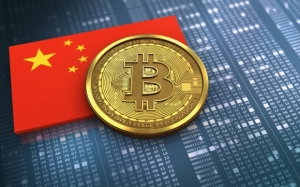Blockchain Research
The Asian countries that need a CBDC
At the recent Singapore Fintech Festival, the city-state’s announcement that it would pursue a wholesale central bank digital currency (CBDC) pilot next year was big news, and justifiably so. As Southeast Asia’s key financial center, Singapore’s monetary policy decisions usually have regional implications.
What ever happened to Bitcoin mining in China?
It is hard to believe China used to be a hub for Bitcoin mining. While the crackdown on mining activity has been ongoing for several years now, things got real in August when a Chinese government official was sentenced to life in prison for illegitimate business operations related to running an RMB 2.4 billion (US$329 million) Bitcoin mining enterprise and for unrelated charges of corruption. Maybe it was the corruption that landed the official, Xiao Yi, such a stiff sentence from the Intermediate People’s Court of Hangzhou, but regardless, this type of precedent will probably be enough to deter most people in China from trying their luck at crypto mining.
Why CBDCs still have limited appeal
At the Singapore FinTech Festival last week, IMF managing director Kristalina Georgieva made the case for central bank digital currencies (CBDCs) in her keynote address. She succinctly highlighted most of the key reasons central bankers like the concept of a digital fiat currency: the potential for improved financial inclusion where it is most needed, replacing cash, enhanced efficiency, speed and transparency in cross-border payments.
Does K Bank have a sound business model?
South Korea is unique in that the majority of its digital banks are profitable. While Kakao Bank generates the most headlines, and has been successful in many regards, its competitor K Bank is the one we find the most intriguing. The reason is that K Bank, majority owned by the telecoms giant KT Corporation, was dogged by financial travails in its early years and even had to pause operations for a while. When the digital lender re-emerged, it was powered by a tie-up with South Korea’s leading cryptocurrency exchange Upbit. While regulatory intentions were good in this case, building a bank on the foundation of crypto seems at the very least to be a bit risky – and it brings into question K Bank’s overall business model.
Assessing the status of mBridge
Constant is the speculation about how China’s central bank digital currency (CBDC) will play a game-changing role in international financial flows, so it was not a big surprise when Bloomberg in August published a report that suggested the Beijing-backed mBridge project (which also includes Hong Kong, Thailand and the United Arab Emirates) might launch even sooner than expected – by year-end – and was on its way to disrupting the dollar’s long-established hegemony. Cutting through the hyperbole is an update on the project from the Bank of International Settlements (BIS) that suggests mBridge is progressing, but that commercialization remains a work in progress.
Why Web3 investment is falling
Web3 investment has been steadily falling since late 2021 as investors take a step back from the mercurial cryptocurrency ecosystem. In the third quarter of this year, investment in Web3 startups fell for the seventh straight quarter, data from Crunchbase show.
India reportedly expands CBDC pilot
India has reportedly launched the next phase of its wholesale digital rupee pilot, according to the Indian media MoneyControl. The digital rupee is now being tested in the call money market where banks borrow from or lend to each other for the short term, usually one day, at market-determined rates, anonymous sources told MoneyControl. The sources added that nine banks participating in this pilot were part of the wholesale pilot of government securities, which was launched on November 1, 2022, to settle secondary market transactions in government securities.
Can Hong Kong balance the risks and opportunities of crypto?
Hong Kong’s full-on push into crypto still seems a bit odd to us. In some way, it appears that the Hong Kong authorities have come to believe that in order to revitalize their financial center’s reputation, they need to do something a bit drastic – such as become fearless promoters of a still unproven type of money and asset class. Compared to Singapore’s approach, Hong Kong’s seems less deliberate, more rushed and higher risk, the bet being that crypto is here to stay and by embracing it now, Hong Kong will reap greater rewards later.
North Korea keeps stealing crypto by the hundreds of millions
If you want proof that sanctions have limited effectiveness, look no further than North Korea. The hermit kingdom is probably the most sanctioned country on earth, and yet it keeps figuring out ever more nefarious ways to access foreign currency. Its mammoth crypto hacks are in a class by themselves, as while there are plenty of criminals that steal decentralized digital currencies, North Korea is among one of the only states that invests considerable resources in such crimes.
The Philippines is moving forward with a wholesale CBDC
The Philippines is moving forward, at least tentatively, with plans to develop a wholesale central bank digital currency (CBDC) and has selected a technology partner for its first digital peso pilot Project Agila. Bangko Sentral ng Pilipinas (BSP) has decided to go with Hyperledger Fabric, an open-source blockchain framework hosted by the Linux Foundation.
More...
Assessing the progress of the digital rupee
Why is it that central bankers are always more enthusiastic about CBDCs than anyone else? That seems to be the case with India’s digital rupee, which appears to not be seeing especially fast uptake in its second year of testing. In July, the Reserve Bank of India (RBI) asked Indian banks to step up their participation in pilot programs because it wants to increase transactions.
Why Singapore is moving to regulate stablecoins
With its announcement of stablecoin regulations, Singapore is betting that these “safer” cryptocurrencies have staying power and will play an increasingly important role in the future of financial services. The decision is consistent with the city-state’s interest in developing itself as a digital asset hub for institutional investors. It also gives Singapore a leg up on Hong Kong, which is also trying to be a cryptocurrency hub of sorts, but has yet to introduce any regulatory framework for stablecoins.
Parsing the cross-border potential of Project Bakong
Cambodia’s Project Bakong is unique if only for the fact that it is a functional blockchain-based CBDC – one of the few in the world along with the digital renminbi and the Bahamas’ sand dollar. In its first few years of existence, Bakong mainly been used domestically and with reasonably good – if not pathbreaking – results: 8.5 million users (more than half of the Cambodian population) and US$15 billion in transactions as of the end of 2022. It is no surprise that Bakong’s creator, the Japanese fintech firm Soramitsu, now wants to expand Bakong’s presence regionally by making it the centerpiece of a regional digital payments network connecting Japan with Southeast Asia.
Does Thailand need a CBDC?
As a medium-income country with a high rate of financial inclusion for the region – more than 80% of Thais have a bank account – Thailand is not the first country we would expect to briskly adopt a digital fiat currency. The purported benefits of a CBDC become nebulous without a pressing financial inclusion need. For that reason, we suspect that the Bank of Thailand has been in no rush to launch a digital baht. But that doesn’t mean it isn’t interested in test driving one – hence the retail CBDC pilot that recently got underway.














